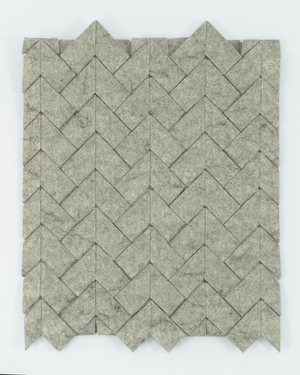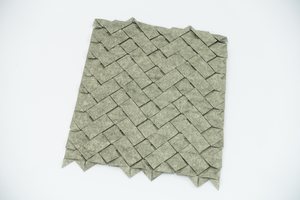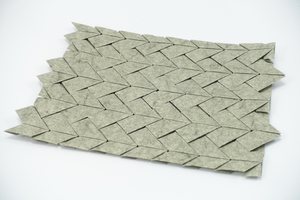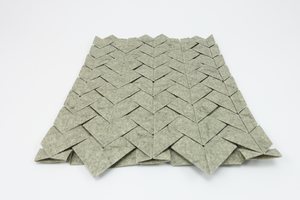Doubt







This design was inspired by ceramic tiles I saw at a store. I found their shape, consisting of a square with a smaller square cut away, interesting. It reminds me of the B-2 bomber or a carpenter’s square.
Since you can’t produce a flagstone tessellation of concave shapes in origami, this design is what I call a pseudo-flagstone (just like Greek Cross Tessellation) where symmetric pleats separate concave shapes and asymmetric pleats combine convex shapes into larger concave shapes. Asymmetric pleats could be squashed into symmetric pleats, which would produce a tessellation of right trapezoids. The back side is also nice, consisting of a tiling of rectangles and squares, though another arrangement of layers is also possible, leading to a less aesthetically pleasing result.
The collapse on this clean fold was quite challenging, but folding the same design from a full grid is much easier. The structure is mostly based on modified square twists also used in other members of the Pythagorean Tiling Family.
Folded from a sheet of gray Elephant Hide paper from an old batch that I got from Origami Shop. Indeed, the pattern differs from gray Elephant Hide produces today.
Comments